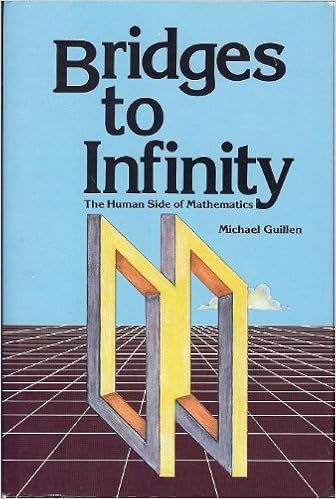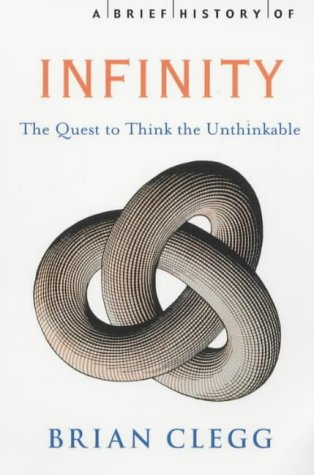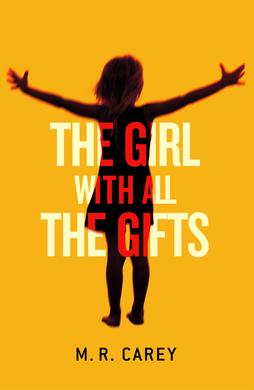If I ever meet Michael Guillen, I will punch him in the face. Usually, I don't write negative reviews, but I'm making an exception. We need to get the word out to people. This book is terrible.
The worst part about Bridges to Infinity is that it looks nice. It has a pretty cover, and a nice narrator, and it doesn't jump into any technobabble. This is why it is dangerous. Do NOT, under any circumstances, treat this like a real book.
The most prevalent problem I have with the book is that, sometimes, it's just wrong. It states things that aren't true. It gets its infinities mixed up, and it doesn't even know what group theory is. Do not read it to learn, because you have no way of telling what is true and what is not.
Another problem is that it manages to be condescending and confusing at the same time, which you couldn't do if you tried. As an example, here's an actual sentence from the book: "If we think of equations as being to algebra what sentences are to English, then the roots of an equation correspond to adjectives and a fifth-degree algebraic equation is like a sentence with five adjectives." What? Anyone who knows what adjectives are (words that describe nouns) and what roots are (values where an output is zero) can see that this is nonsense. He never bothers to explain it better. However, using this kind of language is good at placating people who don't want to look further and think better, people who are content just going "ooh, that sounds cool," instead of actually learning.
Also, and this is just a personal gripe, it's a bit too spiritual and pseudoscience-y for me. There's a lot about the sixth sense that is used to feel mathematics, and also some about souls and our place in the universe. However, it's not too prevalent a theme, so it's pretty easy to ignore.
In conclusion, never buy this book. Never read this book. Tell your friends never to buy or read this book. If a friend is reading it, slap it out of their hands. Bridges to Infinity is a scourge upon mathematics.
Wednesday, December 30, 2015
Tuesday, December 29, 2015
Ruler & Compass
So, here's the deal. I am staying at my grandparent's house right now. And my grandpa is a math teacher at some college. This means he has a lot of math books. Now, I like math. I might be a mathematician when I grow up. So I'm going to review a few books that I read here, and they're all about math. Starting with the infinity one, there's just like three. After that, I'll just take a book home, and then after that no more math books.
I'm making this announcement on Andy Sutton's Ruler and Compass because there's not much to it. If you know about euclidean constructions, well then there you go. The book's about that. If not, then let me explain.
Euclid was a dude who did math back in ancient Greece, and he used logic to prove things in geometry, which was essentially the only mathematics in Greece at the time. Euclid's proofs showed things people could create with just a straight-edge and compass. This book is filled with those things, which are called constructions, so that you can try them for yourself.
Essentially, it's a coloring book for nerds. I've tried a few myself, and it's very satisfying when you get the final result. If you think you'd like this book, then get it.
I'm making this announcement on Andy Sutton's Ruler and Compass because there's not much to it. If you know about euclidean constructions, well then there you go. The book's about that. If not, then let me explain.
Euclid was a dude who did math back in ancient Greece, and he used logic to prove things in geometry, which was essentially the only mathematics in Greece at the time. Euclid's proofs showed things people could create with just a straight-edge and compass. This book is filled with those things, which are called constructions, so that you can try them for yourself.
Essentially, it's a coloring book for nerds. I've tried a few myself, and it's very satisfying when you get the final result. If you think you'd like this book, then get it.
Friday, December 25, 2015
A Brief History of Infinity
I was very confused when I started reading Brian Clegg's A Brief History of Infinity. What I had expected was something like the other mathy books I've reviewed, so I was surprised when it spent a lot of time not talking about infinity. It went on irrelevant tangents, talking about science and people and plagues and things. It wasn't even entirely in chronological order.
I later realized that the reason it was so bad at being a math book was that it was a history book. This book is not about teaching you what infinities are, it's about how the ideas of infinity and the infinitesimal evolved over time, and about what people thought of those ideas. Of course, when it talks about the history of infinity, it also talks about the ideas people had about infinity, because "infinity" has meant different things to different people at different times, and now there are even different kinds of infinity. I guess, given that the subject is so complex, A Brief History of Infinity does a great job of getting it across to you.
If you like the idea of infinity, and you also like reading about people's struggles, then you should read this book. Also, if you want to understand all of the infinities in this link (except maybe surreals), then this book is a really good starting point. Also, it's not that long, so you can read the whole thing over like a weekend. Okay, that's all.
I later realized that the reason it was so bad at being a math book was that it was a history book. This book is not about teaching you what infinities are, it's about how the ideas of infinity and the infinitesimal evolved over time, and about what people thought of those ideas. Of course, when it talks about the history of infinity, it also talks about the ideas people had about infinity, because "infinity" has meant different things to different people at different times, and now there are even different kinds of infinity. I guess, given that the subject is so complex, A Brief History of Infinity does a great job of getting it across to you.
If you like the idea of infinity, and you also like reading about people's struggles, then you should read this book. Also, if you want to understand all of the infinities in this link (except maybe surreals), then this book is a really good starting point. Also, it's not that long, so you can read the whole thing over like a weekend. Okay, that's all.
Thursday, December 24, 2015
The Girl With All The Gifts
The Girl With All The Gifts is a book about the end of the world. In it, a girl named Melanie is kept in a bunker, underground, sealed off from everyone else. Everyone always treats her as if she's extremely dangerous, along with the someteen other kids who share the bunker wit her. I'm not entirely sure how much I should spoil, because there is a nice little mystery through the first part of the book. One thing I will say is: it's totally zombies.
But then, after the mystery is all worked out, the compound is attacked. Melanie escapes, along with a ragtag group of individuals (I don't want to spoil who), and they all have to make it back to Beacon City, the last human stronghold in all of Great Britain. Along the way, they will have to survive bandits, come to uneasy agreements with each other, and not be eaten by zombies.
The zombies, by the way, are definitely a strong point in The Girl With All The Gifts. They are a variation of the cordyceps fungus (think The Last of Us) which essentially just means, "hey, this is technically possible, and therefore better than those other zombies!"* The zombies (which are called "hungries" by the cast) are thin and pale, and they spend most of their time stock-still. However, as soon as they hear a noise, they snap to attention and run towards it. If a hungry smells a human, it also immediately enters its rage state and runs towards it. This is actually a really clever idea, and it leads to the haunting image of a garden of pale figures, staying perfectly still.
There are, however, complications. There are other rules to the zombies which are revealed along the way, and they... well, honestly, they make absolutely no sense. Some of them, at least. This is the problem I have with the book: plot holes. So many plot holes. None of them are game-breaking, but they are certainly there. For someone as plot-driven as I am, this is a serious problem. I like picking apart exactly why and how things happen; it's one of the reasons I love time-travel stories so much. However, there are just too many things to pick at, here.
That's why, originally, I didn't want to write this. I don't like writing negative reviews. If I read a book and don't like it, I usually will just skip over it. However, this book has all of the things I like. An interesting premise. A hostile environment. Half-believable pseudoscience. Excellent characters. Objectively, this is a good book. But I didn't like it.
So, here's my conclusion: If you like zombies, or children, or adventure, or suspense, or mystery, or heartbreak, and you do not care at all about plot holes (or are not good at spotting them), then you should read this book.
*Really, though, there aren't any realistic zombies, just zombies that are slightly less impossible. The cordyceps fungus affects insects and arthropods, things with skeletons. They breathe through their skin. Humans don't. Also, the cordyceps fungus does not make an organism rant to attack or eat its own kind. That would be wildly inefficient. Instead, the fungus just makes it infiltrate its hive area and try to get into a good vantage point to spread its spores. I don't know of anything that deliberately makes an animal attack another animal. Even rabies just makes the animals angry, aggressive, and confused; as opposed to bloodthirsty. I think 28 Days Later's "rage virus" is the most semi-realistic zombie I've seen. Although the Brooks Zombies will always be the best ones.
tl;dr: Ain't no realistic zombies. Using an actual organism only helps with appearances. If you want a good, realistic interpretation of human cordyceps, take a few minutes to read Up, by Josef K. It's real short.
But then, after the mystery is all worked out, the compound is attacked. Melanie escapes, along with a ragtag group of individuals (I don't want to spoil who), and they all have to make it back to Beacon City, the last human stronghold in all of Great Britain. Along the way, they will have to survive bandits, come to uneasy agreements with each other, and not be eaten by zombies.
The zombies, by the way, are definitely a strong point in The Girl With All The Gifts. They are a variation of the cordyceps fungus (think The Last of Us) which essentially just means, "hey, this is technically possible, and therefore better than those other zombies!"* The zombies (which are called "hungries" by the cast) are thin and pale, and they spend most of their time stock-still. However, as soon as they hear a noise, they snap to attention and run towards it. If a hungry smells a human, it also immediately enters its rage state and runs towards it. This is actually a really clever idea, and it leads to the haunting image of a garden of pale figures, staying perfectly still.
There are, however, complications. There are other rules to the zombies which are revealed along the way, and they... well, honestly, they make absolutely no sense. Some of them, at least. This is the problem I have with the book: plot holes. So many plot holes. None of them are game-breaking, but they are certainly there. For someone as plot-driven as I am, this is a serious problem. I like picking apart exactly why and how things happen; it's one of the reasons I love time-travel stories so much. However, there are just too many things to pick at, here.
That's why, originally, I didn't want to write this. I don't like writing negative reviews. If I read a book and don't like it, I usually will just skip over it. However, this book has all of the things I like. An interesting premise. A hostile environment. Half-believable pseudoscience. Excellent characters. Objectively, this is a good book. But I didn't like it.
So, here's my conclusion: If you like zombies, or children, or adventure, or suspense, or mystery, or heartbreak, and you do not care at all about plot holes (or are not good at spotting them), then you should read this book.
*Really, though, there aren't any realistic zombies, just zombies that are slightly less impossible. The cordyceps fungus affects insects and arthropods, things with skeletons. They breathe through their skin. Humans don't. Also, the cordyceps fungus does not make an organism rant to attack or eat its own kind. That would be wildly inefficient. Instead, the fungus just makes it infiltrate its hive area and try to get into a good vantage point to spread its spores. I don't know of anything that deliberately makes an animal attack another animal. Even rabies just makes the animals angry, aggressive, and confused; as opposed to bloodthirsty. I think 28 Days Later's "rage virus" is the most semi-realistic zombie I've seen. Although the Brooks Zombies will always be the best ones.
tl;dr: Ain't no realistic zombies. Using an actual organism only helps with appearances. If you want a good, realistic interpretation of human cordyceps, take a few minutes to read Up, by Josef K. It's real short.
Labels:
cryptids/monsters,
dying forever,
friendship,
future,
less than positive,
mystery,
suspense
Wednesday, December 23, 2015
Single Digits
Numbers are cool. Many people, including probably you, are not entirely aware of this. If you never liked math, or you want to know a bit more about math, or you love math and want to celebrate it in a simple way, there is one book you have to get: Things to Make and Do in the Fourth Dimension.
However, if you've already read that, Marc Chamberland's Single Digits might be a good follow-up. It covers all of the digits from one to nine, in numerical order. Although you won't gain any miraculous understanding of the workings of existence, a lot of it is very interesting. Also, I was pleasantly surprised that all of the numbers really did have personalities. It's... rather strange, actually.
All in all, this is a quaint book about numbers. It's nice to pick up and read for a few minutes. If you have already read Things to Make and Do in the Fourth Dimension, and you want more of the same but in bite-sized chucks (and much less brilliant), then give this a shot.
However, if you've already read that, Marc Chamberland's Single Digits might be a good follow-up. It covers all of the digits from one to nine, in numerical order. Although you won't gain any miraculous understanding of the workings of existence, a lot of it is very interesting. Also, I was pleasantly surprised that all of the numbers really did have personalities. It's... rather strange, actually.
All in all, this is a quaint book about numbers. It's nice to pick up and read for a few minutes. If you have already read Things to Make and Do in the Fourth Dimension, and you want more of the same but in bite-sized chucks (and much less brilliant), then give this a shot.
Subscribe to:
Posts (Atom)




